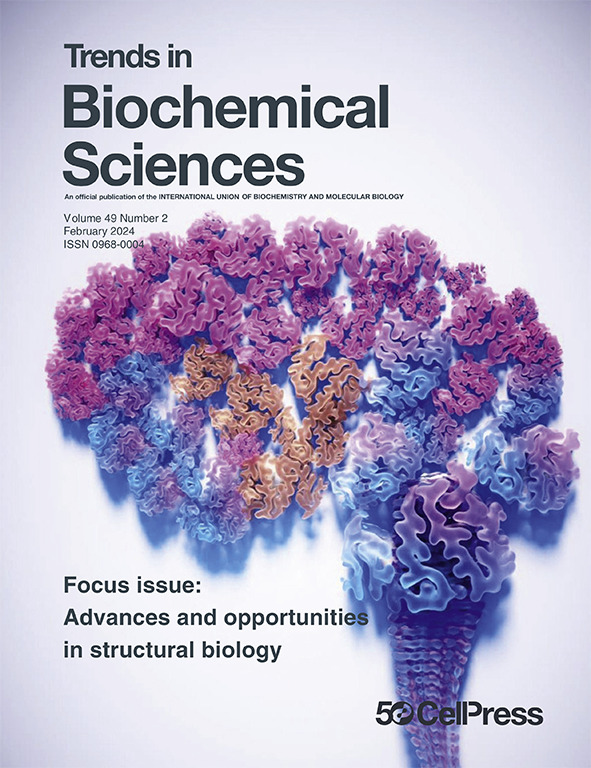适应氧的氢化酶的不同谱系和适应性。
IF 11
1区 生物学
Q1 BIOCHEMISTRY & MOLECULAR BIOLOGY
引用次数: 0
摘要
氢化酶允许微生物消耗和产生氢气(H2)。虽然大多数氢化酶对氧(O2)敏感,但最近的研究表明,细菌和古细菌产生多种镍铁[NiFe]氢化酶,这些酶在氧环境中起作用,通常支持有氧呼吸。正如我们在本文中所描述的,这些氢化酶已经独立地进化出多种抵抗O2的策略,不仅通过使用独特的[4Fe3S]簇将结合的O2还原为水来逆转抑制,而且通过狭窄的气体通道和活性位点重排来阻止O2结合。我们进一步提出,[NiFe]-氢化酶起源于缺氧的地球,但在大氧化事件后发生了多样化,以耐受和利用与O2的氧化还原偶联。氢化酶可能比以前认为的更能适应O2,这对合成生物学和仿生学有影响。本文章由计算机程序翻译,如有差异,请以英文原文为准。
Diverse lineages and adaptations of oxygen-adapted hydrogenases
Hydrogenases allow microorganisms to consume and produce hydrogen gas (H2). Although most hydrogenases are oxygen (O2)-sensitive, recent studies show that bacteria and archaea produce diverse nickel–iron [NiFe]-hydrogenases that function in oxic environments and often support aerobic respiration. As we describe herein, these hydrogenases have independently evolved multiple strategies to withstand O2, not only by reversing inhibition through reduction of bound O2 to water using a unique [4Fe3S] cluster but also by preventing O2 binding through narrow gas channels and active-site rearrangements. We further propose that [NiFe]-hydrogenases originated on an anoxic Earth, but diversified after the Great Oxygenation Event to tolerate and exploit redox coupling with O2. Hydrogenases may be more adaptable to O2 than was previously thought, and this has implications for synthetic biology and biomimetics.
求助全文
通过发布文献求助,成功后即可免费获取论文全文。
去求助
来源期刊

Trends in Biochemical Sciences
生物-生化与分子生物学
CiteScore
22.90
自引率
0.70%
发文量
148
审稿时长
6-12 weeks
期刊介绍:
For over 40 years, Trends in Biochemical Sciences (TIBS) has been a leading publication keeping readers informed about recent advances in all areas of biochemistry and molecular biology. Through monthly, peer-reviewed issues, TIBS covers a wide range of topics, from traditional subjects like protein structure and function to emerging areas in signaling and metabolism. Articles are curated by the Editor and authored by top researchers in their fields, with a focus on moving beyond simple literature summaries to providing novel insights and perspectives. Each issue primarily features concise and timely Reviews and Opinions, supplemented by shorter articles including Spotlights, Forums, and Technology of the Month, as well as impactful pieces like Science & Society and Scientific Life articles.
 求助内容:
求助内容: 应助结果提醒方式:
应助结果提醒方式:


